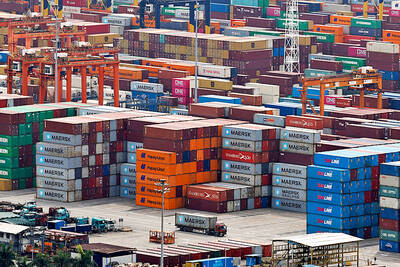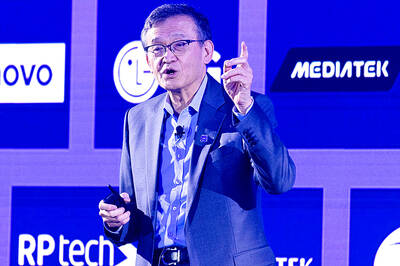Purveyors of luxury goods are waking up from their dream of conquering India as the last great frontier for their high-end and high-priced wares.
With the world’s economy in recession, luxury retailers are rethinking plans that saw them rushing into what they hoped would be the next China — a market of more than 1 billion people with middle-class aspirations and their eye on the next fashion status symbol.
A combination of global downturn, domestic red tape, regulatory hurdles and a thriving trade in smuggled goods means it will be a long time yet before India becomes big business for Europe’s luxury retailers, experts said.
At a recent conference in the Indian capital, industry executives conceded India has potential — but is a long way from realizing it.
“Before it becomes a very big business for us — I am already a grandfather — I think I will be a grand, grand, grand grandfather,” said Christian Blanckaert, executive vice-president of French giant Hermes International.
Having fattened up during the boom years, the international luxury goods industry turned its attention to emerging markets such as China and India, hoping that economic growth would create new markets where money was no object.
As European and US markets have withered, the roll-on effects of the recession are now being felt in the countries that retailers such as Hermes, Gucci and Chanel had hoped would be the source of future profits.
“It’s a bit like watching a cocktail party on the Titanic,” said one US fashion executive at the conference, as delegates air-kissed, sipped Champagne and nibbled canapes.
Worldwide luxury goods sales are expected to fall this year by between 10 percent and 15 percent, US-based research consultancy Bain and Co said. India accounts for just 0.4 percent of the estimated US$233.9 billion in global luxury sales, Bain said.
The big luxury retailers began their foray into India in 2002, targeting the newly affluent beneficiaries of economic reforms.
So far more than 50 premium and luxury brands, including Jimmy Choo, Gucci, Christian Dior, Piaget, Moschino, Todd’s, Chanel and others, have set up shop in India, opening boutiques in five-star hotels and shopping malls.
But window-shoppers have vastly outnumbered buyers, even throughout the economic boom that has just come to an end, said BK Murjani, who developed India’s first luxury mall in Mumbai.
International brands came to India with “euphoric expectations” but had not done due diligence, said Murjani, whose Murjani Group is the biggest in India’s premium sector.
Their estimates had been wildly incorrect, he said, with sales averaging US$5,380 per square meter of floorspace, compared with US$32,280 to US$64,560 per square meter internationally.
He said the average luxury retail outlet in India last year lost US$4,035 per square meter, before overheads.
Murjani agreed India has great potential as a luxury goods market, but added: “The bottom line is that Indian luxury business as it is structured is not a commercially viable model.”
Since the middle of the 1980s the number of people in India living on less than US$1 a day has fallen to 54 percent of the population from 94 percent, consultancy McKinsey said.

The Eurovision Song Contest has seen a surge in punter interest at the bookmakers, becoming a major betting event, experts said ahead of last night’s giant glamfest in Basel. “Eurovision has quietly become one of the biggest betting events of the year,” said Tomi Huttunen, senior manager of the Online Computer Finland (OCS) betting and casino platform. Betting sites have long been used to gauge which way voters might be leaning ahead of the world’s biggest televised live music event. However, bookmakers highlight a huge increase in engagement in recent years — and this year in particular. “We’ve already passed 2023’s total activity and

Nvidia Corp CEO Jensen Huang (黃仁勳) today announced that his company has selected "Beitou Shilin" in Taipei for its new Taiwan office, called Nvidia Constellation, putting an end to months of speculation. Industry sources have said that the tech giant has been eyeing the Beitou Shilin Science Park as the site of its new overseas headquarters, and speculated that the new headquarters would be built on two plots of land designated as "T17" and "T18," which span 3.89 hectares in the park. "I think it's time for us to reveal one of the largest products we've ever built," Huang said near the

China yesterday announced anti-dumping duties as high as 74.9 percent on imports of polyoxymethylene (POM) copolymers, a type of engineering plastic, from Taiwan, the US, the EU and Japan. The Chinese Ministry of Commerce’s findings conclude a probe launched in May last year, shortly after the US sharply increased tariffs on Chinese electric vehicles, computer chips and other imports. POM copolymers can partially replace metals such as copper and zinc, and have various applications, including in auto parts, electronics and medical equipment, the Chinese ministry has said. In January, it said initial investigations had determined that dumping was taking place, and implemented preliminary

Intel Corp yesterday reinforced its determination to strengthen its partnerships with Taiwan’s ecosystem partners including original-electronic-manufacturing (OEM) companies such as Hon Hai Precision Industry Co (鴻海精密) and chipmaker United Microelectronics Corp (UMC, 聯電). “Tonight marks a new beginning. We renew our new partnership with Taiwan ecosystem,” Intel new chief executive officer Tan Lip-bu (陳立武) said at a dinner with representatives from the company’s local partners, celebrating the 40th anniversary of the US chip giant’s presence in Taiwan. Tan took the reins at Intel six weeks ago aiming to reform the chipmaker and revive its past glory. This is the first time Tan